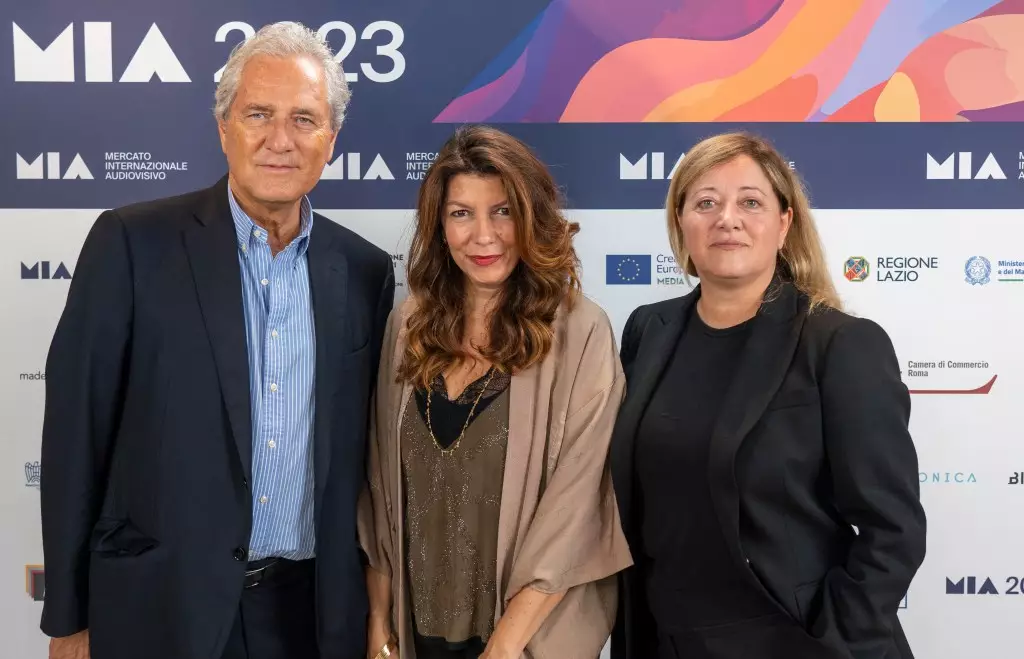The MIA Market in Rome has recently demonstrated a remarkable uptick in the quantity and quality of submissions for its Co-Production Market and Pitching Forum. With an impressive 20% increase in submissions, the market has proven to be an essential platform for filmmakers and content creators eager to showcase their projects. This surge not only reflects the growing interest in cross-border collaborations but also highlights the increasing global appetite for diverse storytelling through various genres, including drama, documentaries, and animation.
This year, MIA received a total of 600 submissions, of which only 60 were selected for presentation—an acceptance rate that underscores the competitive nature of the event. The rise in submissions from 80 to 90 signifies a 12.5% increase in participating countries, indicating a broadening of the market’s appeal across different cultures and creative visions. Particularly noteworthy is the Drama Co-Production Market and Pitching Forum, which has seen a 6% increase in submissions.
A notable feature this year has been the diversity in the series projects, with 14 selections hailing from 12 nations. These projects range from Italian family thrillers to adaptations of graphic novels, showcasing the rich tapestry of narratives that the market is promoting. Among these, titles like “A Family Reunion” and “Uglycomics” stand out, not only for their intriguing plots but also for their connection to homegrown talents and international collaborations.
A focal point of the MIA Market this year is the emphasis on international co-productions. Noteworthy projects like “Palmyra,” which tells a captivating tale of three heiresses in crisis, and “The Aosawa Murders” based on the haunting book by Riku Onda, illustrate the potential of cross-cultural narratives to resonate with audiences worldwide. This collaboration between U.S. and Japanese filmmakers underscores the importance of integrating varied cultural perspectives, leading to products that are enriched by diverse influences.
Furthermore, projects such as “Castle of the Eagles,” reflecting historical narratives through a contemporary lens, and the female reinterpretation in “Viktoria Frankenstein” highlight the industry’s shifting dynamics. These projects represent a growing trend where traditional narratives are being challenged and re-envisioned, providing audiences with fresh perspectives that engage the mind and heart.
The MIA Market also demonstrates a commitment to inclusivity, with significant representation of women in various roles across projects. The documentary pitch segment is particularly noteworthy, featuring 14 projects from 13 countries, with nearly 64% created by women. This focus on gender representation is essential in an industry that has historically struggled with equity, and MIA is taking tangible steps to address this imbalance.
Similarly, the animation sector has experienced a striking 50% increase in submissions, conveying the medium’s rising status as a formidable form of storytelling. With 15 projects representing 15 different countries, animation is emerging as a vital platform for diverse voices, further enriching the cinematic landscape.
As the tenth edition of MIA unfolds at the Palazzo Barberini and Cinema Barberini from October 14 to 18, the excitement around the event is palpable. Under the guidance of Gaia Tridente, who has been steering the program for the third consecutive year, the market is poised to solidify its position as a premier destination for creative minds. The festival has already facilitated over 100 audiovisual productions after previous years, marking it as a significant launchpad for numerous projects.
The MIA Market’s growth and reform reflect a broader evolution within the film industry toward enhanced collaboration, diversity, and representation. As filmmakers navigate the challenges of a globalized market, MIA acts as a critical catalyst for innovation and change, providing a platform for stories that deserve to be told. The momentum it has garnered signals a promising future for both emerging and established filmmakers alike. As audiences yearn for richer narratives, events like MIA will undoubtedly play a crucial role in shaping cinematic experiences in the years to come.
